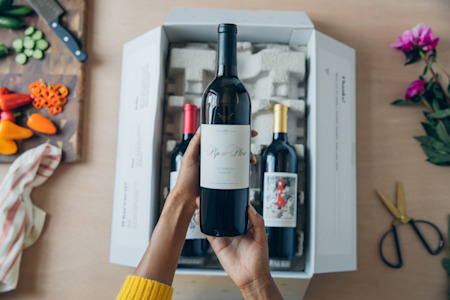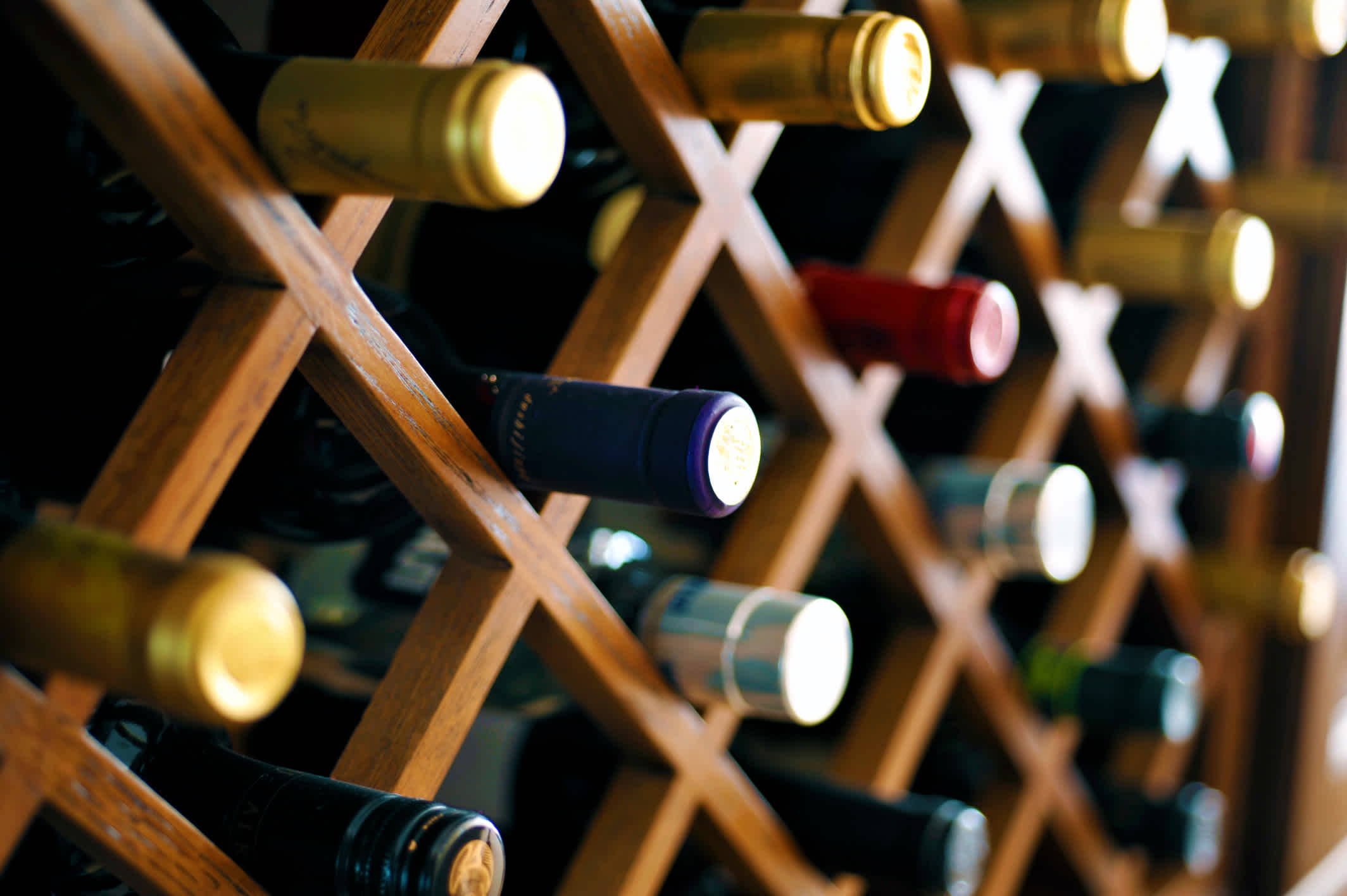How To Store Wine
Learn about how to best store your wine at home
Wine is an amazing alcoholic beverage. Since it’s alive and changing all the time, it's possibly the most nuanced and complex beverage you can enjoy.
Want to know how to store wine correctly? You don’t need a wine cellar to store wine like a pro. But if you do have a wine cellar—congrats! That will definitely take the pressure off storing your wine correctly.
Most wine is consumed within just a few hours of buying. Winemakers produce the wine to be consumed young, specifically within one to three years of being bottled. So even if you don't drink a bottle of wine on the same day you purchase it, there's a great chance it was not meant for long-term storage and should be consumed in its youthful state.
Wine is more easily damaged than most other drinks, so proper storage will ensure that your wine is performing its best when you open it. Poor storage conditions can adversely affect your wine experience. In this post, we will give you storage tips for all different types of wine and outline common mistakes to avoid.

Take Our Quiz Today
Get award-winning delicious wines from all over the world shipped straight to your door. Take the quiz to get the perfect pairings for your holiday season.
Take The Quiz TodayIN THIS ARTICLE:
Want personalized wines?
Get your first box of wines for $44.95 + free shipping.

What Is the Best Way to Store Wine (Short Term)?
So you purchased a few bottles of wine, but aren’t planning on drinking it quite yet. Where do you keep it? If you're like most people, your wine bottles go on the top of your refrigerator or on the window sill.
Unfortunately, these are two of the worst possible places that you could keep your bottles of wine—whether you’re storing red wine, white wine, or sparkling wine.
Wine is affected easily by three things: heat, sunlight, and temperature. On a windowsill, the sun shining on a bottle will warm it, and eventually, the heat can cook out the more nuanced flavors. The top of the refrigerator is also warm from the motor that keeps the contents inside cool, and can, once again, cook your wine.
Even room temperature is too warm for serving wine, so finding a place for storage should make it cooler and quicker when you are ready to open the bottle.
Here are some of the best places for short-term wine storage in your house:
Inside the refrigerator: Cool temperatures slow down the aging process of wine, so the inside of your refrigerator is perfect for short-term storage. This is true for red wine and white wine. Plus it saves you on having to chill your whites before opening, they're already cool!
A wine cooler: No room in the fridge? A passive place to keep your wine could be in a cooler with a freezer pack or some ice. The wine storage temperature for aging wine is typically between 51°F-59°F, so lowering the ambient temperature in an insulated wine cooler could be a good (and mobile) option for some wine lovers.
A wine fridge: A dedicated wine refrigerator is a perfect place to store and cool your wines if you happen to have one on hand. A wine fridge can help maintain a constant temperature and chill your wines so they'll be ready to serve at any time.
A cool closet: A closet or basement that receives little to no sunlight and maintains a consistently cool temperature will be your next best option. If you have a wine rack, a cool closet or basement is a great place to keep it.
Fun Fact
Most people serve red wine too warm. See the best serving temperature for wine to make sure you are serving at cellar temperature and not room temperature. Read more fun wine facts.
-Firstleaf
How Do You Store Wine Once It’s Open?
Sometimes you end up with half a bottle of wine, how should you store your leftover wine? There are plenty of options for making your leftover wine last a day or two after it is opened. Oxygen is the enemy in this situation. For the same reason that you use a decanter to aerate a wine when it's tight, you want to limit the exposure of oxygen to the wine.
Storing it upright (as opposed to horizontally) with the cork in the top will limit the surface area exposed to the oxygen and slow the degradation of the wine.
Transferring the contents to a half size bottle can also help minimize the amount of wine exposed to oxygen. Wine stoppers are available at many wine shops and online locations and are a good step up from simply using the cork. (Read more about corked wine.) A Vacu Vin (or other similar systems) uses a small pump and a special stopper to remove some of the oxygen from the bottle. These can add an extra day to the life of your wine over shoving the cork back in.
The fanciest option is a Coravin (or similar) system that accesses the wine using a needle and pumps small amounts of inert gas as wine is poured through it to replace what is being taken out.
Natural corks are resilient and will reseal after this process. The biggest issue with this system is that it is expensive. If you are a collector with many older wines it could be a worthwhile investment, but for most wine drinkers this is overkill.
Why Store Wine Long-Term?
Quite simply, old wine that has been stored correctly can be an incredible treat for any wine lover. As the wine matures (under the correct conditions) the flavor compounds, phenolics, and acidity meld together to add new flavors that weren't present in the wine's youth.
Tannins combine with other chemical compounds in the wine and settle out as sediment, this leaves a wine that is less astringent and a more cohesive whole. The term typically associated with aged, fine wine is "balanced," which means that no aspect of the wine stands out over the others.
Some wines do age better than others. Top-tier aged Bordeaux and Burgundy are some of the most sought after, and expensive, wines on Earth, but even these have periods where they are not as good.
Pinot Noir (Burgundy) tends to go through a phase in the middle of its aging process where the flavors are muted and do not display the complexity that comes in old age.
It should be noted that aging wine is unpredictable even under the most closely controlled circumstances. You are subject to the variation in vintage, the smallest changes in storage conditions, and more. It's uncertain if the wine you open will still taste good at all.
Fun Fact
Wine should be stored horizontally. This keeps the cork moist from the inside, which protects it from drying out and allowing too much oxygen in or leakage. Learn how to build your own wine storage.
How to Store Wine Long Term
So you splurged and have some bottles of wine with the right structure, tannins, acidity, and provenance to age. How do you store it correctly to protect your investment?
In long-term wine storage, the most important factor is consistency. Temperature swings can prematurely age your wine, so to store bottles at the ideal wine storage temperature requires either refrigeration or a stable, underground environment.
Wine should also be stored away from direct sunlight. Seasonal temperature fluctuations from the sun can damage wine, and the UV rays can adversely react with certain chemical compounds in the wine (this is especially true of white wines).
Humidity is another aspect that is absolutely critical in a well-outfitted wine storage area. While there are various theories about what humidity level is the best for wine bottles, all experts agree that it is imperative that the cork doesn't dry out. Keeping the cork moist will protect the wine from oxygen and the cork from leaking.
Below are a few of the most common (and best) options for long-term wine storage:
Professional storage: The most hands-off storage solution for wine collectors is professional wine storage. These storage locations will store wine bottles in verified conditions primed for resale at auction.
While it is expensive you can be sure that your wine stash is kept at a constant temperature with an up-to-date cooling system that is constantly monitored. If you view your wine collection as an investment, professional storage is a must.
Wine cellars: More and more aficionados are building wine cellars at home. This is another expensive option that will protect your wine for the long haul but will need professional installation in almost all cases.
Many French chateaus are blessed with natural wine cellars that regulate temperature without much help, but elsewhere for a cellar to be truly effective it must be deep enough underground to stave off large ambient temperature variation and be incredibly well insulated.
Wine refrigerators: Refrigerators are an easy entry into long-term wine storage as they come in sizes that will fit in any household for a few hundred dollars.
Common Wine Storage Mistakes
Don't put bottles of wine in the freezer for a long period of time! This can freeze the water in the wine and push the cork out or even break the glass.
Don't leave your wine in a bright window.
Don't store your wine on top of the refrigerator.
Don’t store wine upright. Wine should be in constant contact with the cork, otherwise, the cork can dry out and oxygen can seep into the wine and damage it.
Don’t confuse storing temperatures with serving temperatures. They’re two different things. Although red wines and white wines are typically served at different temperatures, the ideal wine storage temperature for both is around 55 degrees Fahrenheit.
Don’t drink a bottle of wine that has been opened for more than a few days.
Don’t store your wine in a clear tupperware, mason jar, or water bottle.
Don’t store all your wines long-term. Not all wines should be aged, as most wines are meant to be opened and enjoyed within two years after it was bottled. (But you can save special bottles, like the Reserve Collection in our wine store, to celebrate very special occasions.)
Get Wines Worth Storing With Firstleaf
Firstleaf is America’s most personalized wine subscription service. We take the guesswork out of wine selection, but leave all the adventure, delivering world-class wine tailored to your taste. We sample over 10,000 wines a year, selecting only the finest bottles. Then we curate each box to your unique preferences so you can discover new favorites, not just once, but over and over again. Learn more about how Firstleaf works.
At Firstleaf we guarantee every selection we make. If you ever get a bottle that isn’t exactly what you were hoping for, reach out to our Wine Concierge team and we’ll happily find another Firstleaf wine you’ll love, on us!
IN THIS ARTICLE
Want personalized wines?
Get your first box of wines for $44.95 + free shipping.


WinePrint™ by Firstleaf
Are you looking to learn more about your wine preferences? Check out our Wine Print for an in-depth look at your personal tasting profile. Discover your favorite wines, varietals, regions, and tasting notes and get personalized recommendations wherever you are.
Learn More
